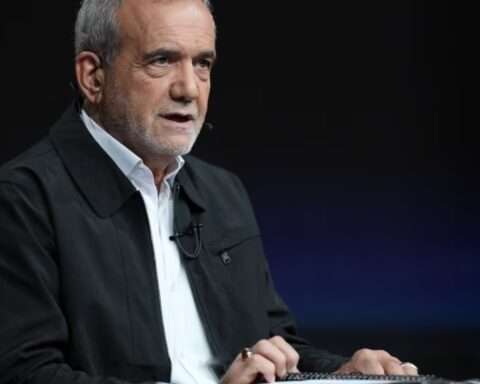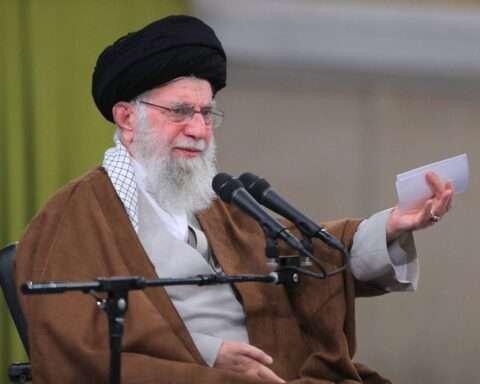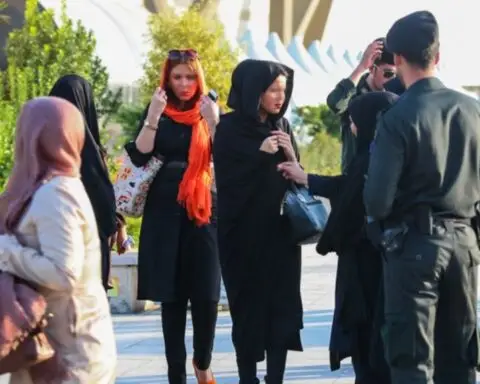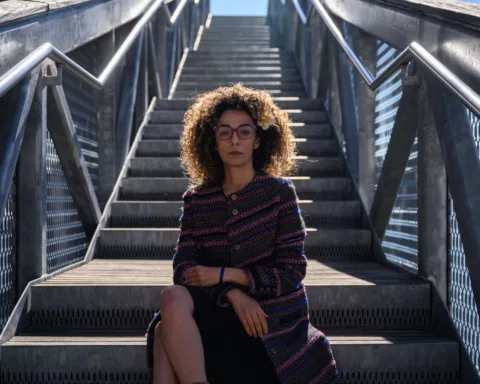Anti-government protests have raged in cities, towns, and villages across Iran since the death of 22-year-old Mahsa Amini on September 16.
But in recent days, the western Kurdish region has become the epicenter of the weekslong demonstrations and the focus of the government’s bloody crackdown.
Amini’s funeral in Kurdistan Province on September 17 was the catalyst for the nationwide protests. She died three days after she was arrested by Iran’s morality police for allegedly violating the mandatory hijab law.
Human rights groups say the authorities have intensified their crackdown in provinces with significant Kurdish populations, including Kurdistan, Kermanshah, and West Azerbaijan.
Iran Human Rights (IHR), an Oslo-based group, said on October 12 that at least 30 people had been killed in the three provinces since the protests erupted. Overall, at least 108 people had lost their lives in demonstrations across the country, IHR said.
The harshest government crackdowns have occurred in Sanandaj, the provincial capital of Kurdistan, and in Amini’s hometown of Saghez. Amateur videos from the area appear to show security forces using firearms and tear gas and firing directly into residential homes.
A resident of Sanandaj, who spoke on condition of anonymity for fear of retribution, told RFE/RL’s Radio Farda that she had heard the sound of gunshots and explosions during recent nights. “Plainclothes [intelligence] agents and security forces have taken control of all major intersections” in the city, she said.
“People are very angry,” she said, adding that residents were “airing their grievances and demands.” “People have had enough.”
The France-based Kurdistan Human Rights Network said on October 13 that security forces had killed at least 30 protesters, wounded another 825, and arrested more than 2,000 in the predominantly Kurdish regions.
In the past week alone, security forces have killed six protesters in predominately Kurdish areas, according to Zhina Mostajar from Hengaw, a rights group registered in Norway that reports on Iran’s Kurdish region. Hengaw says the overall death toll in the Kurdish areas since the protests began is at least 32.
Mostajar says the real extent of the crackdown in Kurdish areas is not yet clear due to a near-total Internet shutdown imposed in the region. But she said the situation was “very concerning.”
“The reports we’re receiving do not give the full picture,” Mostajar, who is based in neighboring Iraq’s semi-autonomous Kurdish region, told RFE/RL. “We’re receiving information drop by drop and we have to confirm them before being able to publish them.”
Reports have suggested that some protesters wounded in the crackdown refused to go to hospital to receive treatment, fearing that they would be detained by security forces.
Amnesty International said on October 11 that it was “alarmed by the crackdown on protests in Sanandaj amid reports of security forces using firearms and firing tear gas indiscriminately, including into people’s homes.”
Separatist Scapegoats
Iranian journalist Parisa Karami, who is based in the city of Baneh in Kurdistan Province, says residents in Kurdish areas are continuing to protest despite efforts by the government to crush the demonstrations. “There have been sometimes small and at other times larger protests,” she told RFE/RL. “But they are going on.”
“The situation in our city, Baneh, has been very securitized,” Karami added. “Riot police have closed the streets [during protests]. There were clashes and security forces used tear gas.”
Iran’s hard-line Tasnim news agency, which is affiliated with the Islamic Revolutionary Guards Corps (IRGC), reported on October 12 that the situation in Sanandaj was calm despite the continuing protests. Interior Minister Ahmad Vahidi, who visited Sanandaj on October 11, blamed the unrest in the city on “terrorist and separatist groups,” a claim dismissed by local activists and journalists.
“Among Kurdish people, there are different [political] parties and groups,” Bakhtiar Khoshnam, the editor in chief of Iran’s Mokrian news agency, said in an interview from Iraqi Kurdistan. “But these protests have been focused on the slogan of ‘woman, life, freedom’ and as far as I know there haven’t been any separatist chants.”
Another journalist, Germany-based Ammar Goli, says the authorities are trying to pin the blame on armed Kurdish groups in order to discredit the protests. “This rhetoric has been used in the past and they have used this propaganda to wage repression in the region,” Goli told Radio Farda.
Armed Kurdish opposition groups fighting for autonomy in Iran have sporadically clashed with Iranian security forces. Over the years, Iran has targeted their bases in Iraqi Kurdistan with missiles. Last month, the IRGC launched drone attacks against two Kurdish groups in Iraqi Kurdistan, accusing them of inciting “the riots” in Iran.
The Islamic republic has long been accused of suppressing and discriminating against the country’s ethnic minorities, including Kurds, which make up about 10 percent of the population of 84 million.






